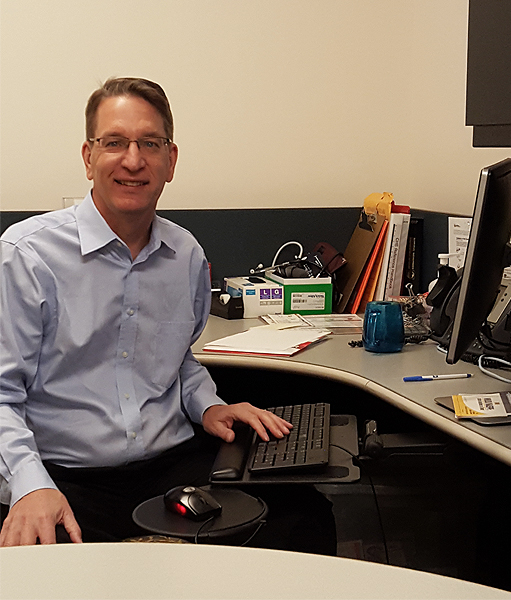
Insurance companies want their beneficiaries to stay healthy enough to avoid acute care hospitalization and getting them to that point is a job they are increasingly willing to take on themselves. That means they need clinicians on the payroll with the skills necessary to deliver patient education to people with chronic medical conditions.
AARC member Tim Ballweg, RRT, CPFT, AE-C, has one of those jobs. As asthma educator for the Group Health Cooperative of South Central Wisconsin in Madison, he works with asthma patients and their families every day to ensure they have the knowledge they need to self-manage their disease.
He shares the journey he took to get the position in this Q&A —
When did you become an RT and what drew you to the profession?
I completed my education at Madison College in Madison, WI, in 1993. My father had emphysema and this factored into my decision to enter the field. The respiratory program appeared to have opportunities available in patient care and technical equipment of a scientific nature; it really intrigued my motivation to enter this school.
Where did you work when you first started out in the field and what did you like about that job?
My early employment as a staff respiratory therapist was in a rural hospital and clinic setting. I enjoyed the wide variety of respiratory responsibility, from birth to end of life.
How did you transition into your current role as an asthma educator at the Group Health Cooperative of South Central Wisconsin and what pieces of your education, background, and experience do you think helped you get the job?
At the time I was hired I became the first respiratory therapist in this organization. My respiratory education background, work experience, and having taken the AE-C board exam were certainly helpful in getting this job.
What does the job entail?
My role as an asthma educator is to meet with patients or families in a proactive educational setting. A typical encounter includes a review of H & P, trigger identification, medication use, and development of a written asthma action plan. Respiratory procedures used may include spirometry, FENO, or oximetry testing. The encounters include optimizing the patient’s educational opportunity and to help prevent or avoid unscheduled medical episodes and improve patient quality of life.
I chair an interdisciplinary asthma committee team that initiates asthma improvement projects as well. I also teach clinic nurses how to perform spirometry, and I’m responsible for reviewing all clinic spirometry tests for quality.
How is your RT education and background helping you in the job?
My respiratory education and background provide an expertise that is often requested to help determine other respiratory confounders. This is helpful when working with our providers and medical care teams to determine the diagnosis and treatment.
What would you say are the biggest challenges and the biggest rewards that come from working as an asthma educator in the health insurance setting?
Some of the biggest challenges for an asthma educator will be the medication costs to treat asthma and educating patients about the importance of taking their preventative controller medications. The rewards of meeting individually with patients to help develop their asthma plan and observing them become proficient in asthma self-management is my happiest moment.
What advice do you have for other respiratory therapists who would like to work in a position such as the one you have today?
For me, it was very important to have a strong respiratory foundation before stepping into chronic disease management. Having knowledge of pulmonary function testing and interpretation will be very useful. As an asthma educator you will become the expert in this area and be relied on heavily by the providers. I recommend studying to take the AE-C exam to demonstrate asthma proficiency and experience.
Interested in becoming an AE-C? The AARC’s 10.5 CRCE Asthma Educator Certification Preparation Course can help you get ready for the exam.





